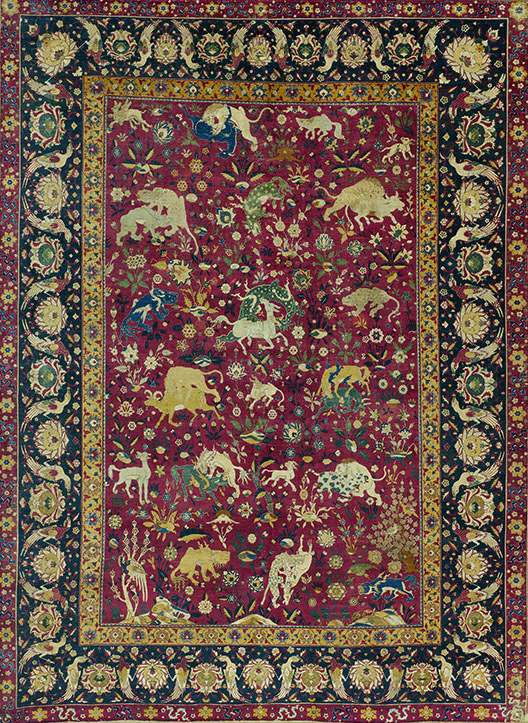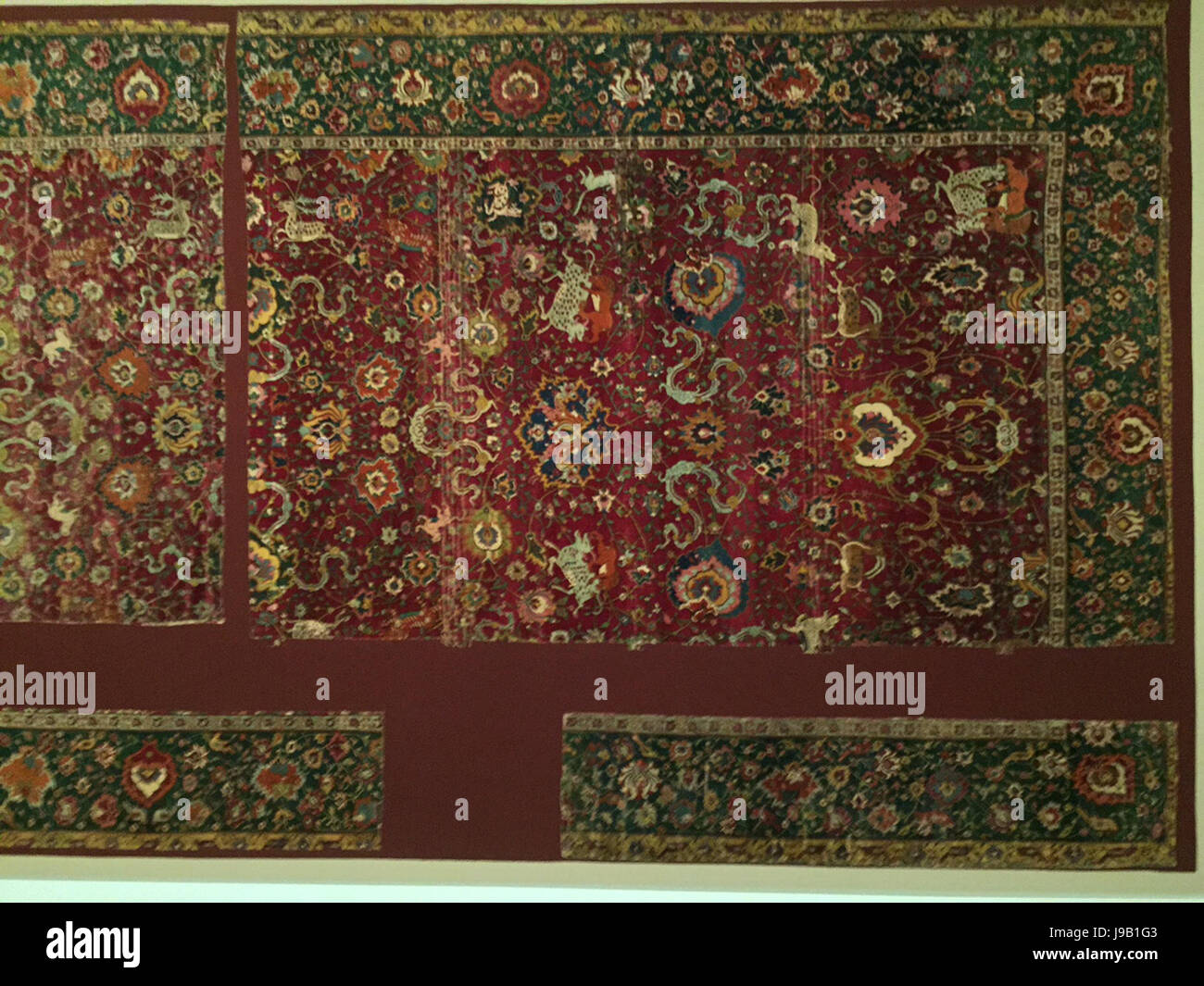The climax of persian carpet design and manufacture was achieved under the safavid dynasty as a result of the inluence of court designers at all levels of artistic carpet production.
Carpet century persia safavid dynasty 1550 1600.
The art of the ottomans after 1600.
Figural representation in islamic art.
The dynasty began as a sufi order but evolved into a major gunpowder empire.
Europe and the islamic world 1600 1800.
Silks from ottoman turkey.
فرش ايرانى farsh meaning to spread or persian rug persian.
However painted depictions prove a longer history of production.
Safavid dynasty ruling dynasty of iran from 1501 to 1736 known especially for its architectural achievements and its establishment of twelver shi ism among various ethnic and linguistic groups throughout iran as a major unifying factor.
By the early sixteenth century the whole area is unified under the rule of the safavids possibly the most successful dynasty to emerge from iran in the islamic era.
In the first half of the period from 1400 to 1600 a d iran is ruled by a series of different turko mongol dynasties such as the jalayirids timurids qara quyunlu and aq quyunlu.
A persian carpet persian.
The arts of iran 1600 1800.
They were traded to europe and the far east where too precious to be placed on the ground.
The safavids ruled greater iran from the early 16th to the 18th century and were avid patrons of the arts.
Fashion in safavid iran.
قالی ايرانى qālī ye īranī also known as iranian carpet is a heavy textile made for a wide variety of utilitarian and symbolic purposes and produced in iran historically known as persia for home use local sale and export carpet weaving is an essential part of persian.
The safavid dynasties of persia ruled from 1501 to 1722.
Under the ottoman safavid and mughal dynasties carpet weaving was transformed from a minor craft based on patterns passed down from generation to generation into a statewide industry with patterns created in court workshops.
Safavid art is the art of the persian safavid dynasty from 1501 to 1722 in present day iran and caucasia.
There is much variety among classical persian carpets of the 16th and 17th century.
In this period carpets were fabricated in greater quantity than ever before.
In the early sixteenth century iran was united under the rule of the safavid dynasty 1501 1722 the greatest dynasty to emerge from iran in the islamic period.
The greater ottoman empire 1600 1800.
It was a high point for the art of the book and architecture.
Carpet weaving in persia dates back to the bronze age.
Carpets from the islamic world 1600 1800.
The safavid empire was one of the most significant ruling.
Islamic art and culture.
The earliest surviving corpus of persian carpets come from the safavid dynasty 1501 1736 in the 16th century.
Safavid court carpets are noted for their detailed precision sumptuous materials and ornate designs.
The safavids descended from a long line of sufi shaikhs who maintained their headquarters at ardabil in northwestern iran.





























